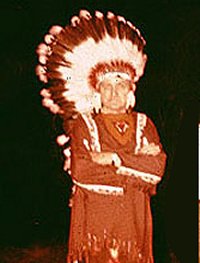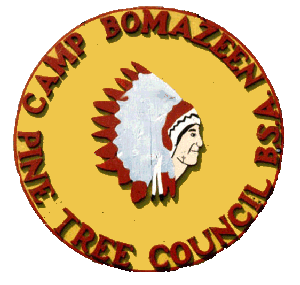| The Pine Tree Council's Madockawanda
Lodge came into existence on July 10, 1944, when the first eight members
were inducted into the Order of the Arrow. These charter members of our
lodge were Howard Butler (the Camp Hinds Director from 1944 to 1947), Frank
W.P. Bailey, Fred Foster, Lee Weeks, Phil Foss, Jordan Prouty, Stanley
Gilman and Arthur Berry. As a part of their ordeal, these candidates were
directed to prepare a ceremonial area on the hill just south of the present
Cadigan Lodge and to construct an altar fireplace and ceremonial altar.
At that time we took the name Madockawanda, based upon a story told by
Uncle Frank Bailey about the great Indian Chief Madockawanda who unified
the Penobscot nation. The snapping turtle was taken as the totem of our
lodge, and the clap 1, 1 -2 as our lodge clap. Our founders were unaware
at the time that the turtle was also the totem of the Unami Lodge #1. |
|
 |









